I had one week to spend in Oman and in doing my research I knew that the best way to get around was to rent a car as there were many places to visit. A week is never enough! Most blogs suggested overnighting in a different place every night to maximize your time there. I wanted to cut down on some of the driving that was suggested and not have to be packing and unpacking every night. So here was how we spent our 1 week in Oman.
Day 1: Landed in Muscat
After settling into our hotel, we headed to Old Muscat and the Corniche where the Souq was. We took some time to walk around Old Muscat which was actually quite “new” in its appearance. It was a quick visit to walk around and see the buildings. Then we headed over to the Riyam Park and had a quick walk around before heading to the souq. Being our first day, we were just scoping out the merchandise but knew that Frankincense was native to Oman and we were very interested in purchasing some. We were too late for visiting the fish and vegetable market at the north end of the corniche.



Day 2. Day Trip to Wadi Shab
We headed out early and went south from Muscat. On our way to Wadi Shab, we first stopped off in Bimmah Sinkhole. This was about 1.5 hours of driving south from Muscat. The park feels sort of out of place when you first arrive. A quick walk through the manicured park and you arrive at this sinkhole where you can get a foot manicure from the fish nibbling at your feet. After a quick stop we got back in the car for a 30 minute drive to Wadi Shab.
You have to take a quick boat ride to get to the other side of a creek. By quick, I mean 2 minutes. Then we walked about 1.5 hours to through the wadi until we got to some pools of water. From there you start swimming from pool to pool. The pools can be shallow but caution was needed because the rocks were slippery. Finally after the 4th pool you get to this cave with a very narrow opening formed of stalactites that is just wide enough for your head to fit through. Inside the cave there is a a water fall. Such a beautiful experience.
After returning, we drove another hour down to Sur to see the lighthouse. Some people may stay the night but we just did a quick visit. Admittedly, if we’d stayed the night we could have visited the souq the next day as it was closed by the time we arrived. Then we returned to Muscat.




Day 3. Day in Muscat
We spent this day in Muscat as it was a break from the driving of the previous day. We started the day visiting Sultan Qaboos Grand Mosque. This was a beautiful modern mosque that can easily take half a day to visit. We did our best to try and visit every corner of the mosque. Plan carefully as there are certain times that you can visit. From the Mosque we headed to the Opera House. We only were able to visit the outside. We considered seeing a show but were informed that what the western standard of opera wear may might not meet their dress code! A quick visit to Qurum Beach which from what we had read sounded like it would have been lined with coffee shops but it only had a couple. Possibly this beach is best visited at night when the locals apparently parade their cars up and down the corniche. Then we went for a photo op at Yiti street. We’d read that Muscat is built between two hills. It was a beautiful view, but finding parking on the side of a steep narrow road was a bit of a feat to get the right photos!




Day 4. Muscat to Nizwa
On day 4, our destination was Nizwa, with some stops made along the way. We drove past Nizwa to Bahla Fort which is one of the largest forts in the country and has Unesco World Heritage status. It’s advisable to visit in the early morning as there is little shelter and the sun can get very hot. The fort was impressive with its expansive panoramic views. Then after the morning visit, we headed to Jibreen castle which was just 15 minutes away. Enclosed, this castle was perfect for a visit in the afternoon. The audio guide that was included gave very interesting facts including how they were able to weaponize dates! The artistry in the castle was impressive. Then we headed to Nizwa to settle in for the night. Nizwa is the gateway into the Hajar mountains.



Day 5. Tour to Jebel Ahkdar
If you are going to drive in this region, you will read that a 4WD is needed. To enter Jebel Ahkdar, there is a check point where only cars that are 4WD are allowed to enter. The caveat is that if you rent a 4WD, and you read the fine print, you are not allowed to take your vehicle off roading. We hadn’t rented a 4WD and opted to book a tour through the hotel. The is mountain is called Ahkdar which we were told meant green. There was some nice vegetation here along with some wadis. We walked through some villages and walked to an abandoned village all while taking in the breath taking scenary.
Upon our return to Nizwa that night, we went to the souq. Not as big as the one in Muscat and probably busier in the mornings than the evenings. It is worth a visit for the date market where you can try all the different types of dates to hearts content! If you time it right, you can even be there on day to see goats auctioned off.



Day 6. Tour to Jebel Shams
We decided to book another tour the next day to Jebel Shams. A 4WD was definitely needed for this as we did some off roading. We started off by visiting some towns along the way. We visited Misfat Al Abriyyin. This little oasis town in the middle of the mountains was lush and green with date plantations. Then we visited Al Hamra which is known for its mud brick houses. We had a quick stroll on foot through the village. Then we headed to Jebel Shams, Oman’s highest mountain, for a trek. We did the balcony walk whose path goes along the edge of a canyon. Our driver came along with us as our guide however the walk is well traversed with sign posts. He brought us to an abandoned village where if we were lucky there would be a pool for us to swim in. What he didn’t know was that trail continued on from there. We realized this because people who were ahead of us had continued on. Then I became the guide pointing out the sign posts and venturing on. We came to this magnificent view of the canyon that our guide had never seen before. Then we found a pool of green water, that looked too cold to go into, which again he had never seen before. I should have asked him for a tip! But it was great to be there with a local guide while he experienced his own country for the first time!





Day 7. Nizwa to Muscat
For our last full day, we headed early back to Muscat in time to join a dolphin tour which also included snorkelling. As we were on the gulf we thought that spending some time doing marine activities would be nice. The dophin watching was one of the best I’ve seen. The dophins were right beside the boat and we kept finding pods of dolphins. Then we returned to the souq to buy our souvenirs before heading home the next day on an early morning flight.


In 7 days, we were able to enjoy some of the culture and nature of Oman. It was a good taster trip and we were able to base ourselves in two cities and do day trips. From other itineraries we came across on the web, we missed out on visiting the desert by not taking a circular route. A week in Oman was definitely not enough, but the time there was thoroughly enjoyed!





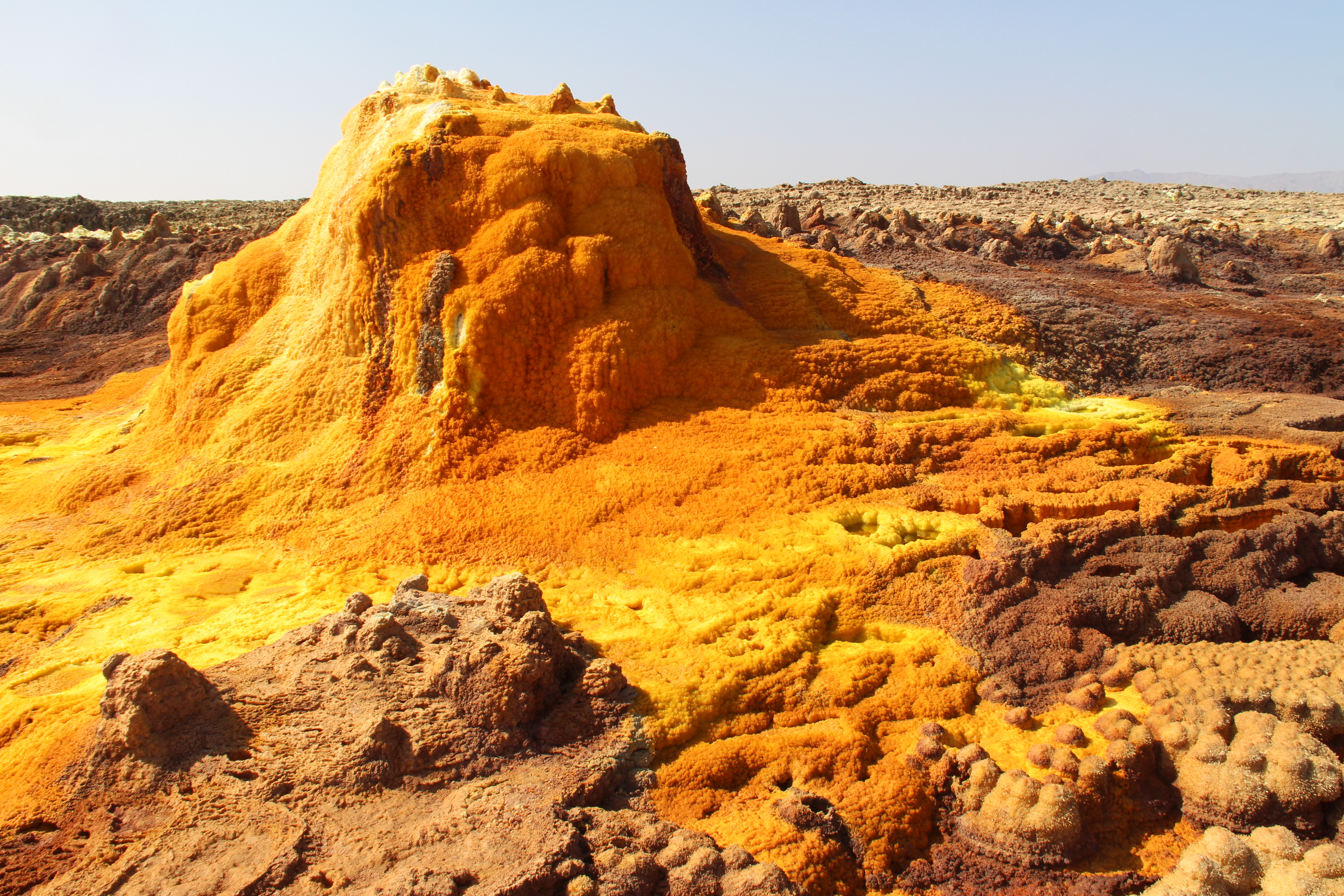













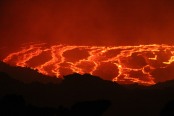
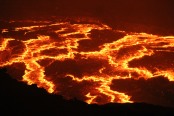


 We only took a few photos. This tribe is known for the woman wearing a clay plate in their lower lip. What I enjoyed with this visit was this little interplay between my driver and some of the men of the village. I was mistaken for Ethiopian all over the country and when we arrived here, the men were asking if I was Ethiopian. My guide had developed a story where my grandparents were from Ethiopia and therefore that is why I don’t speak Amharic. As he tried to convince them, they started to have doubts. A couple of them moved close to me and then said something to me. I just smiled and laughed. They had a great laugh as they turned to him and said she’s a faranji (foreigner).
We only took a few photos. This tribe is known for the woman wearing a clay plate in their lower lip. What I enjoyed with this visit was this little interplay between my driver and some of the men of the village. I was mistaken for Ethiopian all over the country and when we arrived here, the men were asking if I was Ethiopian. My guide had developed a story where my grandparents were from Ethiopia and therefore that is why I don’t speak Amharic. As he tried to convince them, they started to have doubts. A couple of them moved close to me and then said something to me. I just smiled and laughed. They had a great laugh as they turned to him and said she’s a faranji (foreigner).
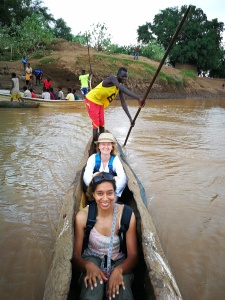 then you can take as many photos as you want and the whole village benefits instead of just the individuals. We learned here how you can tell by how the woman’s hair is arranged if she is single or married. Once married, the woman does all the work while the man gets to chill all day drinking his local brew. They put on a some dancing for us and we were welcome to join them.
then you can take as many photos as you want and the whole village benefits instead of just the individuals. We learned here how you can tell by how the woman’s hair is arranged if she is single or married. Once married, the woman does all the work while the man gets to chill all day drinking his local brew. They put on a some dancing for us and we were welcome to join them.


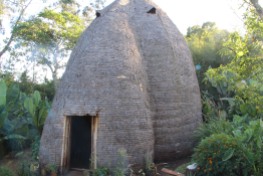
 It was in a bucket complete with some bees and honeycomb. They gave me a spoon and I carefully was extracting honey around the obstacles. Mango’s dad noticed I was taking little amounts so he told Mango to take the spoon and do it for me. Big spoonfuls of honey were given to me complete with bits of honey comb and bee.
It was in a bucket complete with some bees and honeycomb. They gave me a spoon and I carefully was extracting honey around the obstacles. Mango’s dad noticed I was taking little amounts so he told Mango to take the spoon and do it for me. Big spoonfuls of honey were given to me complete with bits of honey comb and bee.
 You could not imagine it. A naked man running across the backs of bulls that are being held in place by other men. It was amazing to see it. We had to leave immediately after the jumping had occurred. It had started raining lightly for about 5 minutes. Our local guide was getting anxious. He mentioned that the river might flood. The riverbed where our car and driver were waiting was very large, and I can’t imagine that the 5 minutes of rain would flood it. But we ran back to the car and it wasn’t until we left the riverbed that we started to see the ground slightly muddy from rain. We were out of the riverbed driving back to the town on dirt roads. Suddenly we came upon 5 other 4WD of tourists that had left from the bull jumping about 45 minutes before us.
You could not imagine it. A naked man running across the backs of bulls that are being held in place by other men. It was amazing to see it. We had to leave immediately after the jumping had occurred. It had started raining lightly for about 5 minutes. Our local guide was getting anxious. He mentioned that the river might flood. The riverbed where our car and driver were waiting was very large, and I can’t imagine that the 5 minutes of rain would flood it. But we ran back to the car and it wasn’t until we left the riverbed that we started to see the ground slightly muddy from rain. We were out of the riverbed driving back to the town on dirt roads. Suddenly we came upon 5 other 4WD of tourists that had left from the bull jumping about 45 minutes before us.  They had been held up by a river that had not been there before. We were able to cross it in the vehicles. Just as we were a couple of minutes from the asphalt road to town (10min drive from our accommodation), we came upon a gushing river that was definitely not there when we had driven in. The drivers said that there was no crossing this river. If the cars got stuck, then the current would take the cars with it. At least we had the company of the other cars. The tour guide of those cars was constantly checking the river to see when it would be crossable. It went from potentially crossable by foot to forget it. We had to wait 6 hours to be able to cross by foot and the current was still strong. The cars didn’t cross for another 6 hours. After we crossed, we had to walk 50 minutes back to our lodge. Did I tell you that this was 12:30am. As we walked with our local guide (our driver remained with the car), I teased my friend as I reminded her that we were walking the same roads at night where during the day tribal men walk with machetes and Kalashnikovs. Our driver later told us that the Hamer tribe are a friendly tribe and knowing that he allowed us to go off on foot.
They had been held up by a river that had not been there before. We were able to cross it in the vehicles. Just as we were a couple of minutes from the asphalt road to town (10min drive from our accommodation), we came upon a gushing river that was definitely not there when we had driven in. The drivers said that there was no crossing this river. If the cars got stuck, then the current would take the cars with it. At least we had the company of the other cars. The tour guide of those cars was constantly checking the river to see when it would be crossable. It went from potentially crossable by foot to forget it. We had to wait 6 hours to be able to cross by foot and the current was still strong. The cars didn’t cross for another 6 hours. After we crossed, we had to walk 50 minutes back to our lodge. Did I tell you that this was 12:30am. As we walked with our local guide (our driver remained with the car), I teased my friend as I reminded her that we were walking the same roads at night where during the day tribal men walk with machetes and Kalashnikovs. Our driver later told us that the Hamer tribe are a friendly tribe and knowing that he allowed us to go off on foot.


 from the beach where we were staying in Ifaty and the plan was to have an early morning walk around the Reserve mainly to see it’s flora and fauna. We saw many Baobab trees. One that was over 1000 years old, and another that was just a baby at 20 years old. One that resembled a rasta with its’ long leaves. Others that took on feminine qualities while others were bunched together like a family. We learned about the water carrying qualities of the trees and how the people sometimes cut into the trees to get water and yet the trees still survive and even continue to grow with new sprouts.
from the beach where we were staying in Ifaty and the plan was to have an early morning walk around the Reserve mainly to see it’s flora and fauna. We saw many Baobab trees. One that was over 1000 years old, and another that was just a baby at 20 years old. One that resembled a rasta with its’ long leaves. Others that took on feminine qualities while others were bunched together like a family. We learned about the water carrying qualities of the trees and how the people sometimes cut into the trees to get water and yet the trees still survive and even continue to grow with new sprouts.



 o panic. As a child, I wasn’t a tree climber. As a climber, I’ve always been attached to a safety harness. Suddenly, reality set in and I realized that I was up in a Baobab tree, with no safety equipment and unsure of my movements within a tree. I pressed my back into the trunk of the tree and straddled the branch and tried not to look down. My travel partner yelled at me to take photos. I said no. She said c’mon. So I tentatively took the camera out of the bag while trying to keep my movements as minimal as possible. Without turning my head and trunk, I took a photo in front of me. Then she told me to take a photo of her. I said no. She said c’mon (please note that she stayed on the ground). I don’t even think I turned my head, but moved the camera in her direction and clicked. Camera quickly back in the bag and it was time to go down…But how?
o panic. As a child, I wasn’t a tree climber. As a climber, I’ve always been attached to a safety harness. Suddenly, reality set in and I realized that I was up in a Baobab tree, with no safety equipment and unsure of my movements within a tree. I pressed my back into the trunk of the tree and straddled the branch and tried not to look down. My travel partner yelled at me to take photos. I said no. She said c’mon. So I tentatively took the camera out of the bag while trying to keep my movements as minimal as possible. Without turning my head and trunk, I took a photo in front of me. Then she told me to take a photo of her. I said no. She said c’mon (please note that she stayed on the ground). I don’t even think I turned my head, but moved the camera in her direction and clicked. Camera quickly back in the bag and it was time to go down…But how?








 hat hole and continued through more depths of the bush. Deep breaths were keeping me from panicking. Some more muddy patches and then out of nowhere, a tiny village with kiosks advertising sim cards appeared and we found ourselves back on the main road. I could breath again! The driver found a villager and confirmed again that we were headed in the right direction. But shortly after that we hit diversion #2. Welcome back anxiety. But just as we turned onto this diversion, our caravan materialized behind us. Yes we no longer were doing this on our own. So we continued forward the three vehicles and I felt so much better because we must be headed in the right direction and we would have help if stuck again.
hat hole and continued through more depths of the bush. Deep breaths were keeping me from panicking. Some more muddy patches and then out of nowhere, a tiny village with kiosks advertising sim cards appeared and we found ourselves back on the main road. I could breath again! The driver found a villager and confirmed again that we were headed in the right direction. But shortly after that we hit diversion #2. Welcome back anxiety. But just as we turned onto this diversion, our caravan materialized behind us. Yes we no longer were doing this on our own. So we continued forward the three vehicles and I felt so much better because we must be headed in the right direction and we would have help if stuck again.

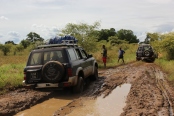
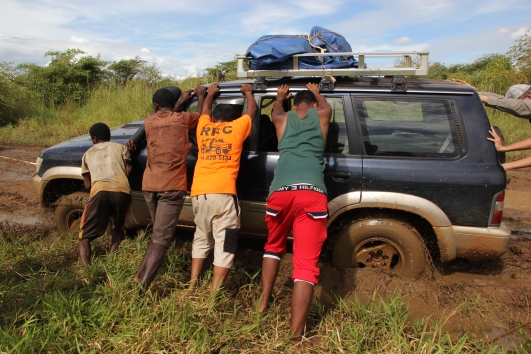
 Cyprus Lake, Bruce Peninsula National Park
Cyprus Lake, Bruce Peninsula National Park 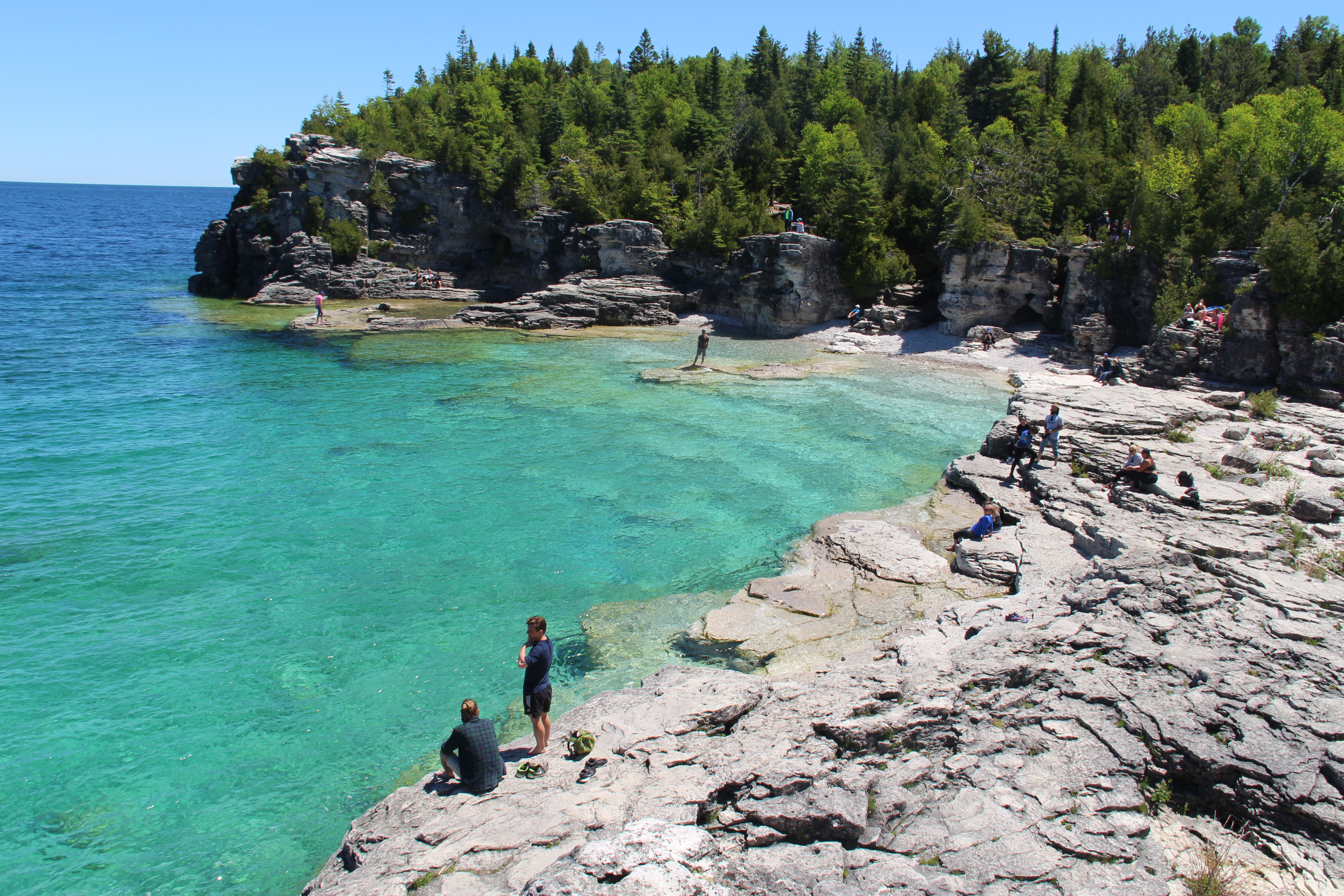 Grotto, Bruce Peninsula Park
Grotto, Bruce Peninsula Park  Grotto, Bruce Peninsula Park
Grotto, Bruce Peninsula Park  Shipwreck in Big Tub Habour
Shipwreck in Big Tub Habour  Flower Pot Island
Flower Pot Island  Flower Pot Island
Flower Pot Island  Flower Pot Island
Flower Pot Island 